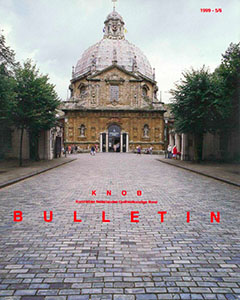Indexering ESCI / Scopus


Inleiding (Koen Ottenheym). Krista De Jonge: 't Hof van Brabant' als symbool van de Spaanse hofhouding in de Lage Landen. Annemie De Vos: Hof van Den Haag en hof van Brussel (1590-1630). Structurele organisatie van de bouwprojecten tijdens de regering van prins Maurits en van de aartshertogen Albrecht en Isabella. Pieter Martens en Joris Snaet: De Mariale bedevaartskerk van Scherpenheuvel. Een onderzoek naar dynastieke relaties en de verspreiding van ontwerpen en denkbeelden over architectuur. Tine L. Meganck: Abraham Ortelius, Hubertus Golzius en Guido Laurinus en de studie van de Arx Britannica. Piet Lombaerde: Continuïteit, vernieuwingen en verschillen. Het concept van de stad in de Noordelijke en Zuidelijke Nederlanden rond 1600.
During the reign of Archdukes Albrecht and Isabella the old ducal palace at the Coudenberg in Brussels is transformed. The original fifteenth-century residence had indeed been expanded under Charles V and Maria of Hungary, but still complied with the requirements of the Burgundian-Habsburg court ceremonial.
However. after his introduction in Spain - in 1520 under Charles V and especially in 1549, when the court of prince Philip is based on this pattern - this ceremonial is evolving and particularly from the 1560's onwards. Consequently, the residences of Philip II in Spain have a...
The study of the structural organization of the building projects at the Brussels court during the reign of Archdukes Albrecht (1599-1622) and Isabella (1599-1633) on the one hand and the court of The Hague during Maurits of Nassau (1585-1625) on the other, revealed both parallels and remarkable differences. Undoubtedly the similarities are due to their common political-historical background until 1581, but even betore the separation differences already emerge.
The Hague is just a count's court - and only later a princely court - in the periphery of the Spanish Kingdom, unlike...
The church of Scherpenheuvel was built from 1609 during the reign and with the support of Archdukes Albrecht and Isabella, who were personally closely involved in the adoration of the miraculous statue of the Virgin Mary. The church building forms the centre of the seven-cornered concentrically laid-out town square already designed for it, which at that time embodied the most modern views on ideal town planning.
The dome-shaped church is built in an utterly modern Italian architectural language and its concept implies a complete break with the local tradition (Illustr. l, 2, 3)....
Between 1566-1568 the well-known Antwerp map-maker Abraham Ortelius (1527-1598) was involved in the archaeological study of the Arx Britannica, a Roman fortress on the coast of Holland. The ruins were only visible during exceptionally low tide; today the monument has been totally engulfed by the North Sea.
The study of the Brittenburg was a group project, probably coordinated by Abraham Ortelius. After Ortelius had drawn a ground plan of the Roman fortress, the painter-numismatist Hubertus Goltzius (1526-1583) sent him an inscription originating from the Brittenburg. The Bruges...
During the reign of Archdukes Albrecht and Isabella in the Southern Netherlands an ever-growing split between the two parts of the Netherlands is evident, especially in the field of politics and religion. A central question emerging here is related to the way in which image and structure of the town developed. To what extent did the Counter Reformation in the south and Calvinism in the north affect urban development?
The fascinating aspect of this confrontation is also to be found in the fact that around 1600 geometrical concepts of town planning and the visual perspective were...


open access mogelijk gemaakt door Stichting OpenAccess
